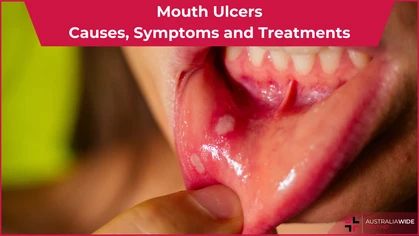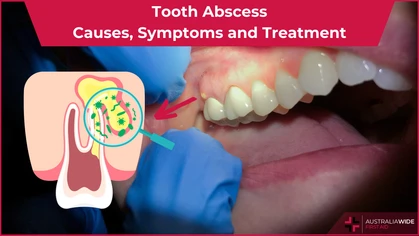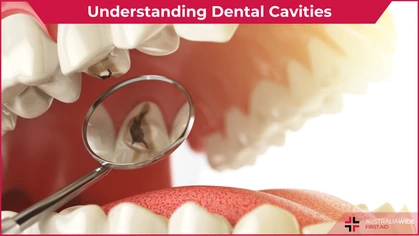Household Mould: Types, Risks, and Removal

General Health-Related
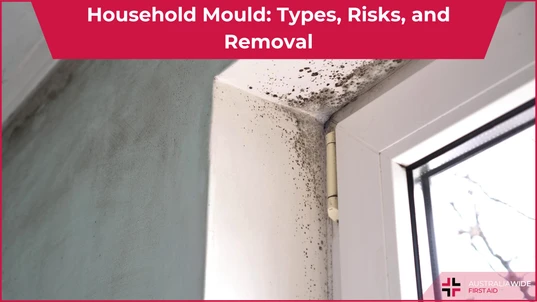 Mould is a common problem in Australian homes, especially in humid regions or areas with poor ventilation.
Various types of mould can thrive indoors, posing health risks and structural damage.
Understanding how to identify different moulds, the dangers they present, and the best methods for removal is crucial for maintaining a healthy living environment.
Mould is a common problem in Australian homes, especially in humid regions or areas with poor ventilation.
Various types of mould can thrive indoors, posing health risks and structural damage.
Understanding how to identify different moulds, the dangers they present, and the best methods for removal is crucial for maintaining a healthy living environment.
What is Mould?
Mould is a type of structure that some types of fungus can form, living off animal and plant materials. You will have seen mould on foods and in your bathroom, but they can also grow on building materials such as drywall and wooden structures. Moulds produce microscopic spores, which usually spread through the air. These spores can lay dormant for years, some indefinitely, waiting for the right environment to grow in. One the moisture level is high enough, the mould will reproduce many times to form a colony. It is this colony that you can see. This most often occurs in areas of the home with high humidity and low ventilation, such as bathrooms, kitchens, storage cupboards, and plumbing spaces. Identifying mould early is crucial to prevent health risks and property damage. Signs of mould include:- Visible spots or patches on walls, ceilings, or floors
- Musty or damp odours
- Discoloration or staining on surfaces
- Peeling or cracking paint
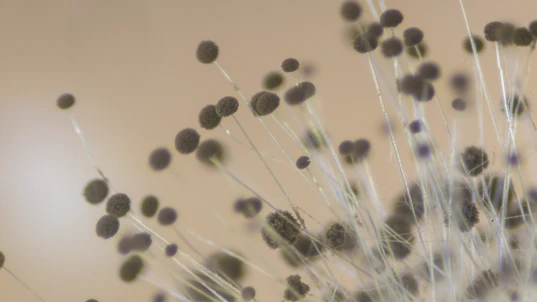
A microscopic view of mould, showing the structures that these fungi make (as opposed to mushroom structures).
Types of Mould in Australian Homes
Aspergillus Identification: Typically appears as black or greenish spots on walls, ceilings, and food. Risks: Can cause respiratory issues, allergic reactions, and in severe cases, invasive aspergillosis, which is particularly dangerous for people with weakened immune systems. Cladosporium Identification: Often found in cooler areas like basements, it appears as olive-green or brown spots. Risks: Known to cause allergic reactions and can exacerbate asthma symptoms. Penicillium Identification: Recognized by its blue or green fuzzy appearance, commonly found on food, wallpaper, and carpets. Risks: Some species can produce mycotoxins, which can lead to respiratory issues and other health problems. Stachybotrys (Black Mould) Identification: Appears as slimy, black patches often found in areas with severe water damage. Risks: Produces mycotoxins that can cause severe respiratory issues, skin irritation, and neurological problems. Alternaria Identification: Dark green or brown spots, often found in damp areas like showers, sinks, and window frames. Risks: Can trigger allergies and asthma, particularly in sensitive individuals.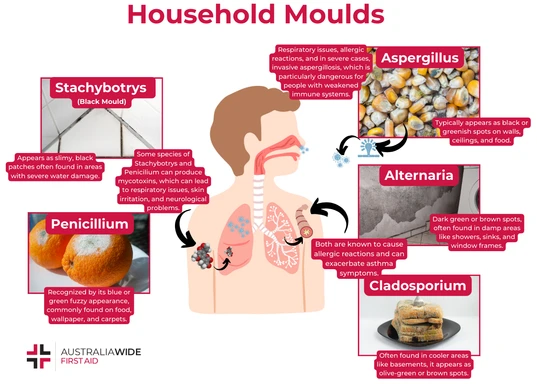
Health Risks of Mould
Mould exposure can lead to a range of health problems, especially for vulnerable groups such as children, the elderly, and individuals with pre-existing respiratory conditions. Common symptoms of mould exposure include:- Allergic reactions (sneezing, runny nose, red eyes, skin rash)
- Respiratory issues (wheezing, shortness of breath)
- Asthma attacks
- Irritation of the eyes, skin, nose, throat, and lungs
Best Ways to Remove Mould
It’s important to note that there is no practical way to get rid of all mould inside your house. The spores are microscopic and can live indefinitely, even when dried out. They can also travel long distances, and may be brought home by any member of the household. All it takes is a few spores settling in a damp area for a few days, and they will begin to spread. Because of this, removing mould as soon as you notice it is the best way to keep on top of infestations. Small Areas (<1 square meter) Materials Needed: Protective gloves, mask, goggles, bleach, buckets, and multiple microfibre cloths. Steps:- Fill one bucket with a diluted bleach solution - one part bleach to four parts water to spot clean mould on surfaces or, if you prefer to use diluted vinegar over bleach, add a concentrate of nine parts vinegar to one part water.
- Grab a microfibre cloth, dip it into this bucket, then use it for cleaning a small patch of mould.
- The same microfibre cloth should then be rinsed in the second bucket, then rinsed again in the third to ensure cross-contamination doesn't occur.
- Repeat steps two and three with any other patches, bearing in mind that if mould covers a large area it should be addressed by professionals.
- Microfibre cloths, which reach deep into tiny crevices and have a slight electric charge, can be bought cheaply and washed on a hot cycle in the washing machine with vinegar up to 100 times. However, be sure to check your washing machine manual before using to ensure it doesn't warn against using vinegar. Please note: If using vinegar, there may still be streaks or discolouration on surfaces which you should be able to remove with bleach.
- Rinse with clean water and dry the area completely.
- Use a dehumidifier or fans to ensure the area stays dry.
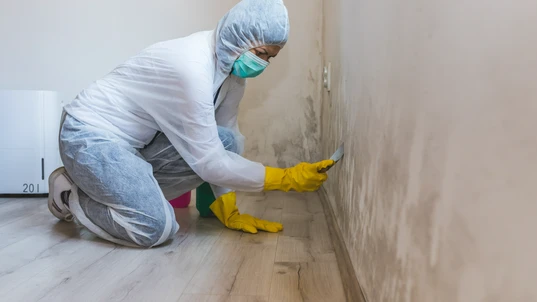
Preventing Mould Growth
Ventilation Ensure good airflow in your home by using exhaust fans, opening windows, and keeping doors open. Humidity Control Use dehumidifiers in humid areas and maintain indoor humidity levels between 30-50%. Fix Leaks Repair any leaks in roofs, walls, or plumbing to prevent water accumulation. Regular Cleaning Keep surfaces clean and dry, especially in areas prone to dampness such as bathrooms and kitchens.Conclusion
Mould is a pervasive issue in Australian homes that can lead to significant health risks and property damage. By understanding the types of mould, identifying their presence early, and using effective removal and prevention strategies, homeowners can maintain a healthier and safer living environment. Regular maintenance, proper ventilation, and prompt repairs are key to keeping mould at bay.
Originally published at
https://www.australiawidefirstaid.com.au/resources/household-mould
as part of the Australia Wide First Aid Articles Library





